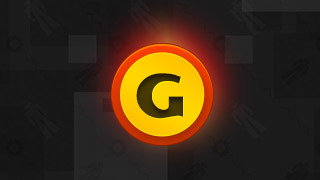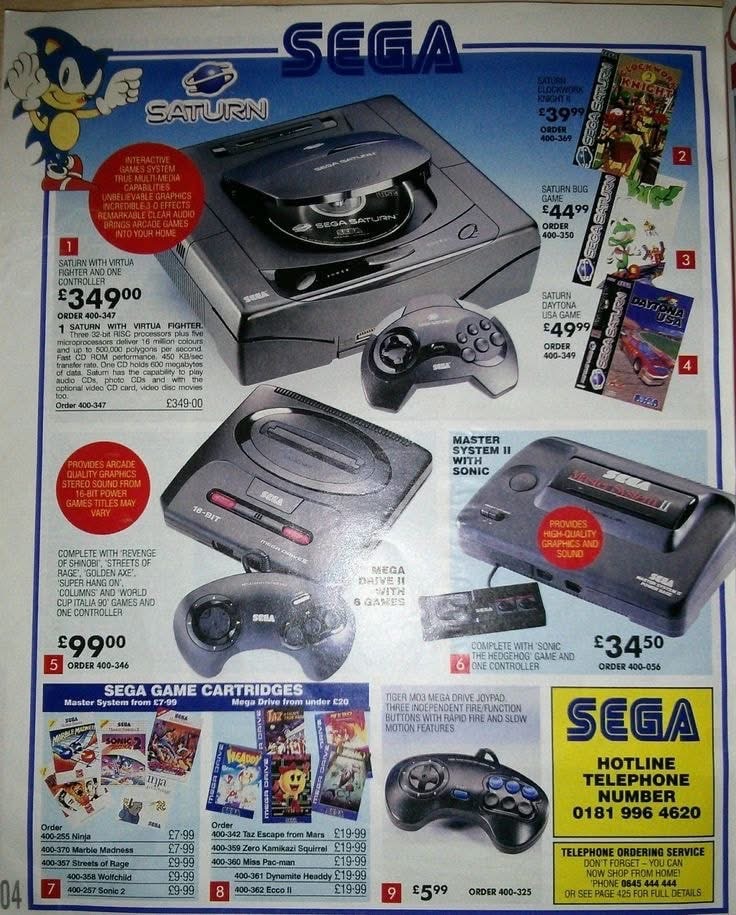thicc_girls_are_teh_best
Member
Right, Saturn is much easier to develop for.
That's....highly debatable. The PS2 is definitely a more complex system, since it's much more advanced. And, I guess, you could say in comparison to contemporaries it was harder to develop for than the Saturn was to its own contemporaries.
However, I don't remember Sony leaving major parts of the PS2 undocumented, the way SEGA basically did for things like the SCU DSP in Saturn. Sony also had proper devkits and APIs ready for developers very early on, again unlike SEGA during the Saturn era. The PS2 technically had two CPUs (the main R5900, and another MIPs CPU that was basically the R3000A from PS1), but their architecture was clearly designed with very specific roles for both from Day 1. It wasn't a last-minute addition like the 2nd SH2 in Saturn (which going by the timeline, would seem SEGA decided on around Summer 1993 or later into the year). SEGA never even redesigned the system bus to account for the 2nd SH2, they just threw it in with the bare minimum and I guess some additional semaphore or mutex logic to the SCU.
The PS2 lacked a lot of the new bonus GPU features both Xbox and Gamecube would have, yes, but it had a ridiculous 48 GB/s bandwidth for the GS's eDRAM to basically push through that with great framebuffer clearing rates. Most of PS2's challenges programming-wise came from simply trying to harness the power; nothing in its design was an outright bottleneck to any other component within the system. It just required a different design paradigm to tackle it, and that took time.
Same can't be said for the Saturn, where more than a couple of things are active bottlenecks to each other. The system bus being a bottleneck to the two SH2 CPUs due to their implementation; the SCU DSP's design being bottlenecked by both the system bus and also the H-WRAM/L-WRAM setup for the CPUs, since it could only use L-WRAM and the SH2s had to VERY carefully manage a portion of the L-WRAM space for the SCU DSP data (the SCU DSP not having its own local RAM aside the on-chip cache). So in a way, there were actually THREE CPUs in the Saturn (the SCU DSP was designed RISC-like but had its own assembly language; you couldn't even use C to program it) all fighting on a super-congested system bus for H-WRAM & L-WRAM memory resources.
That's an entire other league of bottlenecking which simply doesn't exist on the PS2.
The original PlayStation outsold Saturn over 10:1 though, there were always going to be more people interested in PS2 than Dreamcast.
I recall showing off my Dreamcast and SoulCalibur to friends, they were very impressed but they were all PlayStation owners who were very happy with the product and were willing to wait another year.
A few remarked that Sega would abandon it after a couple of years as per the Saturn and they ended up being completely right, by then Sega were seen as a dying brand and had just come off the back of having a while year of zero retail presence. One of my friends did buy one for Code Veronica, which was a very rare example of a developer putting real effort into a third party exclusive.
Dreamcast had to be way better than PS2 in every department to get people back.
Let's also not forget E3 2000 being overshadowed by constant rumours of Sega doing a deal with Acclaim to publish games on PS2 (again, turning out to be completely true)


Sega Addresses PS2 Rumors
GameSpot News speaks with Sega's Charles Bellfield for the full story.www.gamespot.com
Oh dang I had forgotten about those rumors. I think EGM mentioned them back in the day too. It was basically E3 1997 all over again for SEGA. In fact, in a lot of ways business-wise the Dreamcast was a series of repeating many of the Saturn's worst mistakes in new record time.
The eagerness of SEGA to make up for Saturn made them end up going too fast, and tripping into a lot of the same mistakes they did with the Saturn instead.
Again it goes back to SOA. Who cocked up and mishandled the Sonic project?, who cocked up and mishandled the launch of their next gen system?
And again, SEGA real fight wasn't with SONY. Sony had the better hardware, the better tools, the better launch line up and also $500 million behind the PS1, no way could SEGA counter that, not that makes much difference as the Xbox showed.
The N64 and Nintendo were there for the taking; A system that launched with no sports games and well only launched with 2 games was even harder to developer on with a more expensive developer environment and where the move to carts was such a backward step
SEGA should have destroyed the N64 in the USA, Europe and Japan really and without the 32X I believe SEGA would have done just that.
TBF, SOA had no choice in Saturn's early launch. That was a direct order from SEGA of Japan, thinking they could repeat their Japanese launch success (remember in '94 Saturn launched 1-2 weeks ahead of the PS1. November 22nd vs December 3rd).
Well, it ended up being a disaster for reasons I'm sure everyone ITT knows about. As for Saturn destroying N64 in the West....no, that simply wasn't going to happen without a 3D Sonic, or new entries of Genesis games popular in the West like Streets of Rage, or games to combat MK being timed exclusives on PS1 such as a new Eternal Champions.
Axing the 32X would've absolutely helped SEGA in the West, but that alone wouldn't have helped them very long, especially once N64 & Super Mario 64 arrived.
I need to shed some light on this topic.
Sega was the cost-effective company with the Mega Drive. Studies show that $149 was the sweet spot for a console to become mainstream. Sega knew this, but as you know, the Saturn was $399. In times like these, the company needs to sell a certain number of consoles and games to lower the price in the following years. Sega thought there would be demand, and there was, but not at that price, not with the PS1 as option.
Accept this truth: moving consumers to buy a new console is a Herculean task for a newcomer like Sony and an underdog like Sega. In 1995, Sega hadn't crystallized as a brand in the minds of consumers (from 1989 to 1995, six years).
There are several factors:
1. Six years isn't a long time. The PS5 will be six years old and it seems like it was released yesterday. for all intents and purposes Sega was also a newcomer to the console market. Before the Sega Genesis, there was only the NES in people's minds.
2- Parents bought consoles for their children, many bought Sega simply for the price, therefore they don't create a link with the brand
3- Saturn and PS1 were bought by young people with their own money
4- The Saturn and PS1 weren't purchased by regular Genesis and SNES customers; most of the initial sales came from a new audience, perhaps even non-gamers.
5- The psychology of the masses shows that the strongest and most popular, continually grows in popularity, Sony led the generation so the benefits of people's trust were transferred from Nintendo to Sony, therefore the PS2 could have been launched even without a game and it would be a success. That's why Japanese consumers abandoned Nintendo on the GameCube, after all, the old king is dead, long live the king, it's the same concept.
Among all the misconceptions already discussed, we need to add these two truths: Moving consumers to a new platform is very difficult, unless you're a brand that inspires trust. Sega, despite having done a good 4th gen was still a new brand, without the freedom to make mistakes, everything would be different if they had beaten Nintendo in America with an indisputable victory this intangibility explains Saturn, Dreamcast , japan GC.
Wow, one of the few responses from you ITT that I genuinely agree with. Well said.
Last edited:


